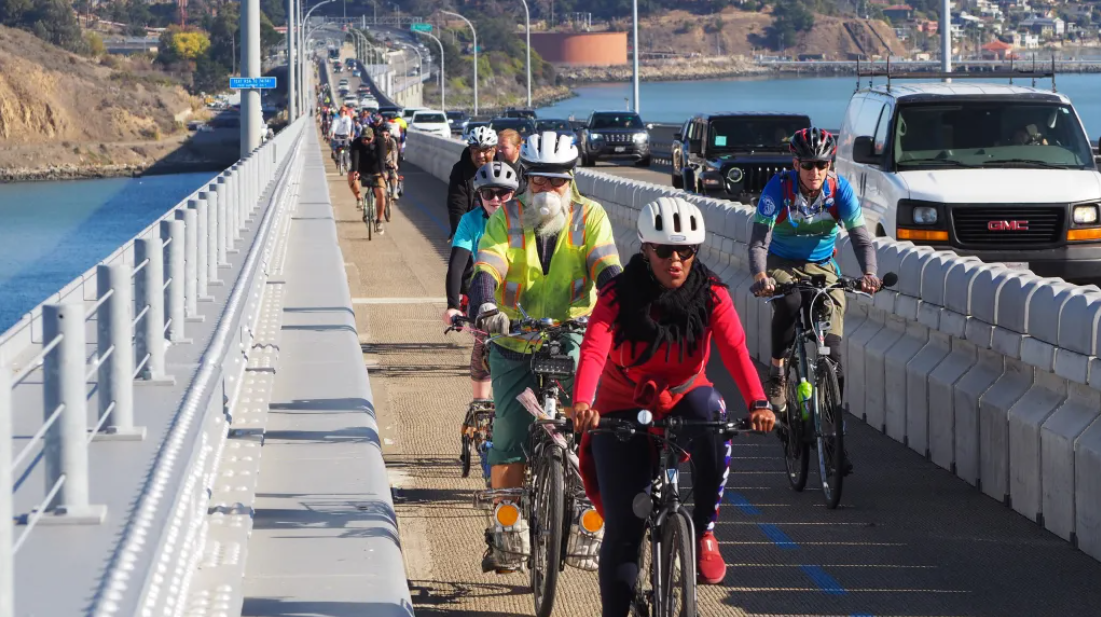Commentary: Western Alameda Bike/Ped Bridge Proposal Is Too Damn Complicated
5:17 PM PST on March 7, 2023
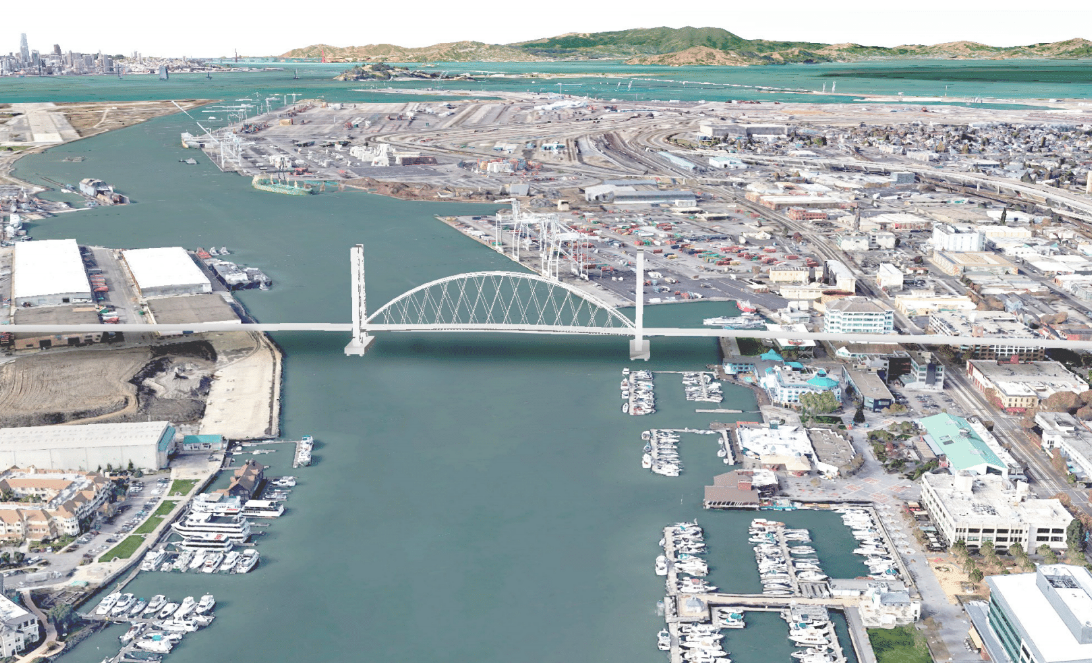
A rendering of a proposed bike/ped bridge across the estuary. Image: Groundworks
Note: GJEL Accident Attorneys regularly sponsors coverage on Streetsblog San Francisco and Streetsblog California. Unless noted in the story, GJEL Accident Attorneys is not consulted for the content or editorial direction of the sponsored content.
There’s no viable way to cross the 800-foot distance between Oakland’s Jack London Square and Western Alameda without a car, except by backtracking more than twice as far and taking a bus. A San Francisco Chronicle piece over the weekend discussed the many issues involved with constructing a pedestrian and bike bridge across the channel, including its updated costs of around $200 million:
Hazy as the plan may be, it’s of a piece with ambitious transportation goals shared by bike advocates, transportation planners and the mayor of Alameda: Enable roughly 30,000 bicycle and foot trips each week between Alameda and Oakland’s Jack London Square, while thinning traffic by up to 40,000 cars per week in the tubes and surrounding roadways. Consistent with the transportation and climate change credos of both cities, the bridge would form a vital path from Oakland’s blossoming waterfront to future housing development in west Alameda.
“It’s challenging, but it’s absolutely needed,” said Andrew Thomas, head of Alameda’s transportation department. “We’re talking about two urban cities that are side by side in the center of the Bay Area, both of which are going to grow dramatically in the next 20-30 years. And for 5½ miles along their common boundary, there’s only a 36-inch path, which runs almost a mile underground, for anyone crossing by foot or bike. Today, you basically have to drive. For the foreseeable future, driving is going to become more and more problematic.”
As Streetsblog has covered many times, the proposal involves a large lift or draw bridge that would raise to allow the passage of sail boats and U.S. Coast Guard Cutters. Half or more of the costs of the bridge involve long ramps and the land acquisitions those require. Due to the complexities of the project, Rachel Swan’s piece includes the phrase “it may never get built” in the headline.
What’s missing from the piece–and the discussions–is an obvious but much simpler bridge proposal that the architects, consultants, and city planners seem to be blowing off.
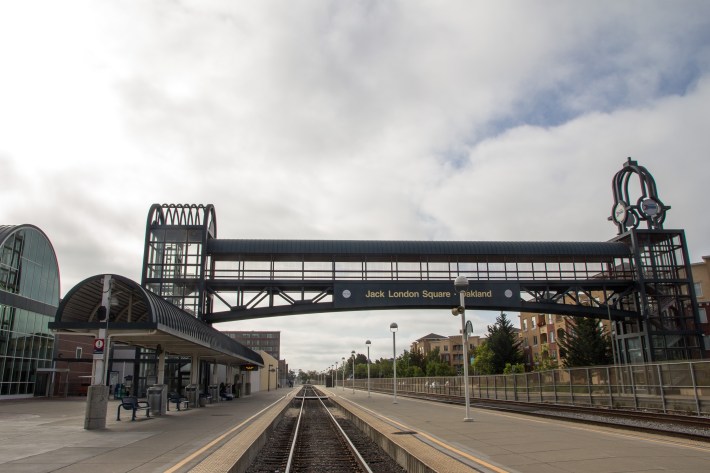
That solution is illustrated, albeit not in the prettiest way, by the railway pedestrian bridge a few hundred feet from the estuary, pictured above. There are elevators and stairs on either side. If a scaled-up version of this style of bridge were built across the estuary, people on bikes, in wheel chairs, and on foot would always be able to get across, even when a ship needs to traverse underneath,
Oakland advocate and professional planner Kenya Wheeler highlighted this simple solution in a Tweet below.
I’m not sure why a bridge design hasn’t been suggested with a fixed high level bridge deck for Coast Guard cutter clearance and high speed elevators to take users to the bridge deck, eliminating the need to raise and lower the bridge. @rachelswan didn’t see this mentioned. https://t.co/ZoL7dxkIOh
— Kenya Wheeler (@kenyaw) March 5, 2023
Streetsblog made exactly this suggestion to architects on the project back in 2020. The answer–and it’s the answer Wheeler received as well–is that cyclists want to be able to ride straight across the bridge and women don’t feel safe in elevators.
Of course, most people on two wheels would rather ride straight across, but that’s not going to be possible for a very long time–much longer if the bridge is overly complex. Even once it’s built, a lift bridge means cyclists and pedestrians will have to wait every time a ship goes by underneath. It also means high maintenance costs and hiring employees to operate the bridge.
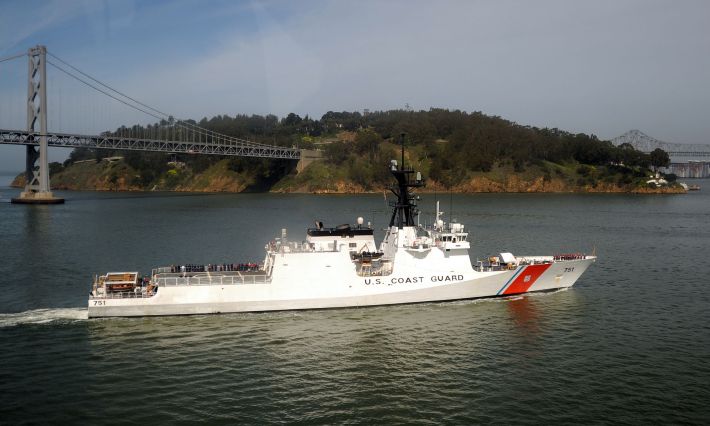
Certainly, if elevators are the solution, they should be glass-encased, well-lit, oversized, fast, with multiple shafts for redundancy. But if elevators make some people feel uncomfortable, they should try using the nightmarish Posey tube catwalk people on bikes are forced to use now:
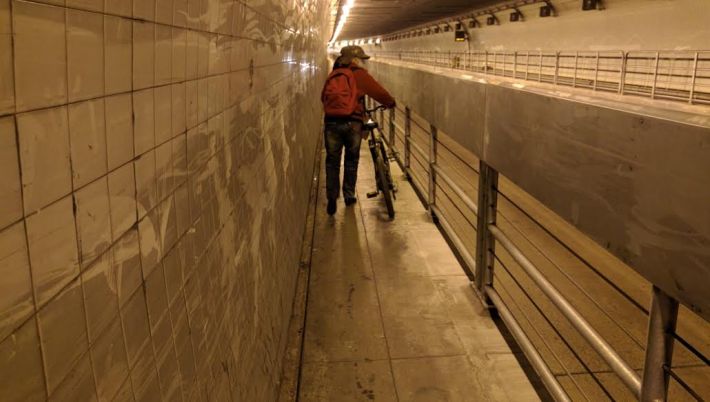
As the New York Parks Department’s Mitchell Silver puts it, equity really just means fairness. Is it fair that a driver can cross between Western Alameda and Oakland in six minutes, any time of day, but a person riding a bike or walking has no means to make the trip now except the polluted, deafening hellscape pictured above?
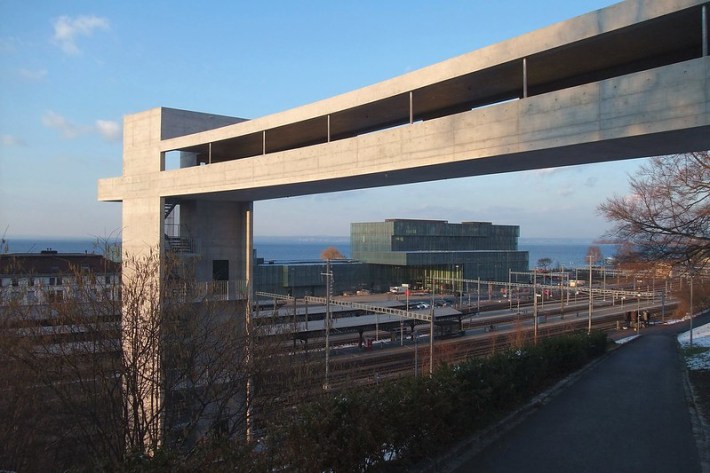
The current situation is utterly inequitable and has to be fixed, with urgency. Cyclists who don’t like using elevators should see that this is a compromise worth making.
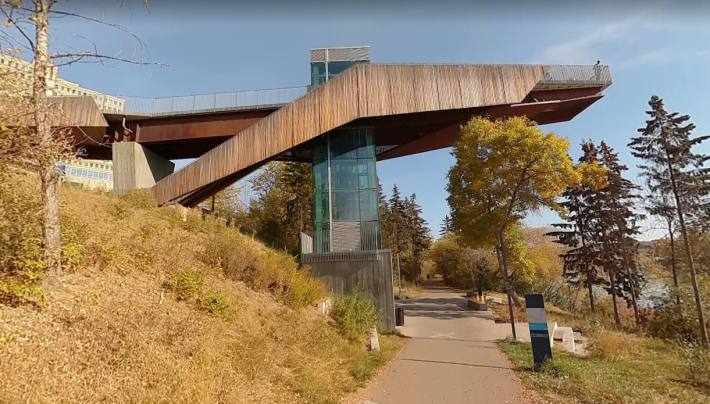
Let’s just get a span across the estuary that satisfies maritime needs and is fair to people who need a safe way to get from A to B. Otherwise, cyclists and pedestrians are probably going to end up with nothing.
Stay in touch
Sign up for our free newsletter
More from Streetsblog San Francisco
Commentary: Merchants Are Getting People Killed
The number one local obstruction to curbing traffic violence is commerce and merchant groups.
